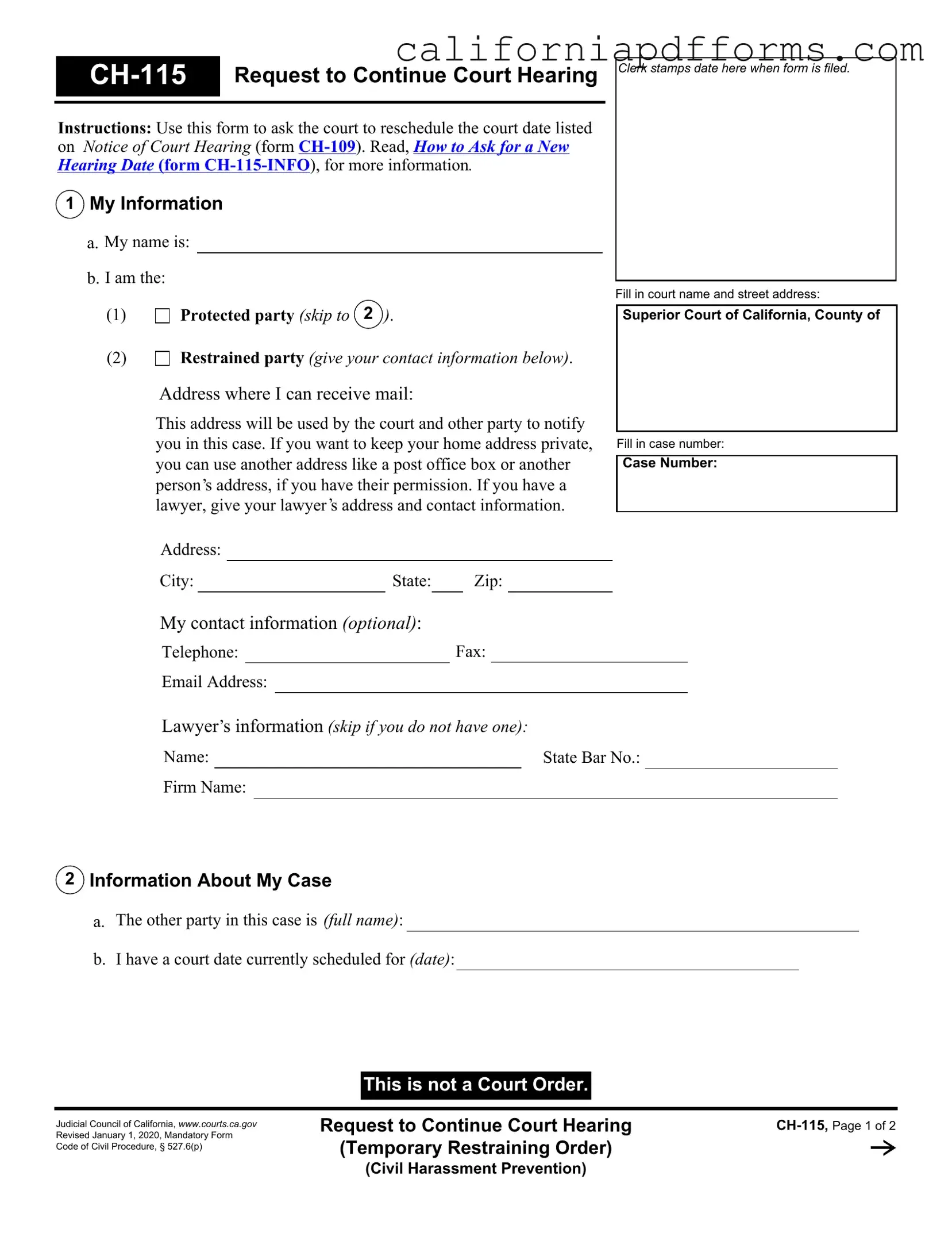The California CH-115 form is a request to continue or reschedule a court hearing. It is specifically used in cases involving temporary restraining orders. If you need to change your court date, this is the form to fill out.
Both the protected party and the restrained party can use this form. If you are asking for protection or if you are the one being restrained, you can submit this request to the court.
You will need to include your name, contact information, and details about your case. Specifically, you should provide:
-
The name of the other party involved.
-
The current scheduled court date.
-
Whether a temporary restraining order is in effect.
Once you have filled out the form, you can submit it to the court where your case is filed. Make sure to file it before your scheduled court date to ensure that your request is considered.
After you submit the form, the court will review your request. If the court agrees to reschedule the hearing, you will receive a new court date. It’s important to note that any temporary restraining orders will remain in effect until the new date unless the court orders otherwise.
Can I request to reschedule the court date for any reason?
Yes, you can request to reschedule for various reasons. Common reasons include needing more time for service or if this is your first request to change the date. You should clearly state your reason on the form.
What if I don’t know the date of the temporary restraining order?
If you are unsure of the date the temporary restraining order was made, you can indicate that on the form. It’s important to provide as much information as you can to help the court understand your situation.
There is no specific deadline mentioned, but it is best to submit the form as soon as you know you need to reschedule. Doing this well before your court date will give the court enough time to process your request.
What should I do if I have a lawyer?
If you have a lawyer, you should include their information on the form. They can assist you with the process and ensure that your request is properly handled.
